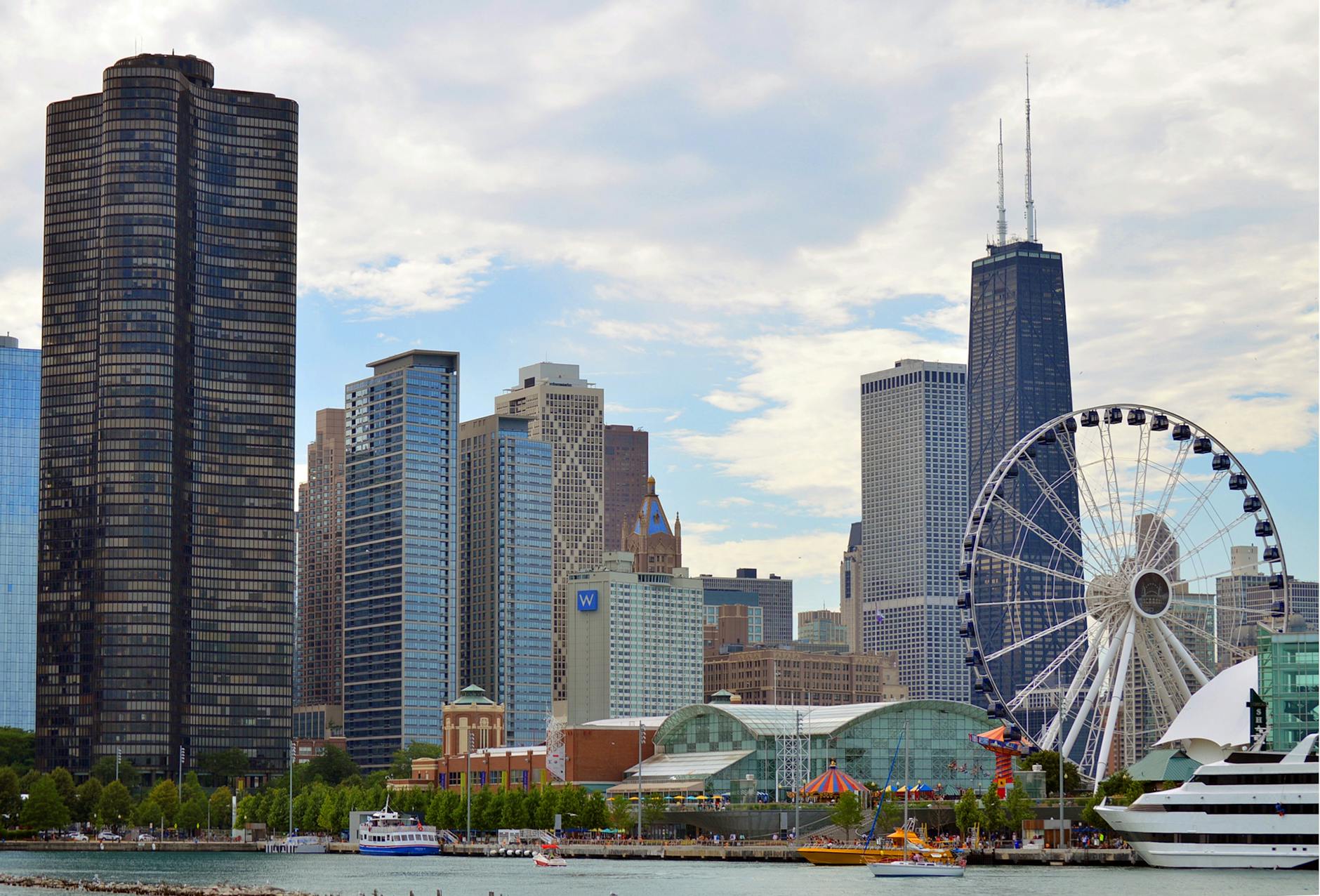How Asset Management Can Transform Green Spaces in Australia

Asset Management Basics
Understanding asset management is crucial for anyone interested in sustainable urban development. Not only is it about overseeing and optimizing economic resources, but it also underpins the sustainable growth of our cities. For someone working in asset management, knowing how mortgage fund options and managed funds intersect with urban planning is invaluable. Melbourne’s Docklands exemplifies how innovative asset management strategies can transform urban landscapes effectively. These regions demonstrate the potential of integrating financial foresight with sustainable design.
When looking at the environmental impact, asset management can play a pivotal role in preserving green spaces like the Royal Botanic Gardens Victoria. Sustainable asset management encourages the development and maintenance of these vital areas. Key strategies include leveraging efficient resource allocation and implementing eco-friendly practices. Balancing modern urban needs with environmental preservation is a challenge but essential for long-term sustainability.
Ultimately, the benefits of asset management extend beyond financial gains. For urban planners focused on sustainability, it opens opportunities for enhancing public spaces while maintaining ecological integrity. By actively managing assets with a focus on sustainable urban growth, cities can ensure that green spaces thrive alongside urban expansion, creating a harmonious balance between urban living and nature. This empowers communities to enjoy these benefits while also contributing to a healthier urban ecosystem.
Sustainable Practices
In a city like Melbourne, known for its vibrant innovation, sustainable practices in urban development are making considerable strides. When you consider a cash investment fund, it's a bit like investing in our urban future—balancing risk with reward. Sustainable urban planning is a critical step toward achieving a resilient ecosystem, much like the green spaces found at the Royal Botanic Gardens Victoria.
Implementing conservative investments in sustainable practices requires a focus on resource-efficient buildings. This includes utilizing solar panels and energy-efficient HVAC systems, reducing urban heat through green roofing, and incorporating rainwater harvesting systems to conserve water. These systems are not just innovative but also vital for long-term environmental impact.
Moreover, the Melbourne Docklands is a perfect illustration of blending sustainable development with economic growth. Here, you can see firsthand how improved resource efficiency can enhance urban areas, encouraging both environmental responsibility and economic vitality.
Mobilising a city means ensuring sustainable practices are embedded into its core structures. This ensures that resources are allocated intelligently, similar to how an efficient cash investment fund is managed. The process creates neighbourhoods and business areas that are not only economically viable but also environmentally friendly.
These initiatives make city living more sustainable and inspire creative professionals to contribute to their urban environment through innovation and sustainability.
Community Engagement
Involving Local Residents
Incorporating local residents into the planning and execution of urban sustainability projects is an integral step toward fostering an eco-friendly community. Initiatives that target the inclusion of residents not only promote sustainable habits but also ensure the longevity and success of eco-friendly projects. Drawing from Melbourne’s sustainable revitalisations in Fitzroy, creative workshops and interactive sessions provide a platform for residents to voice their concerns and ideas. This collaborative environment fosters a sense of ownership, making community members more invested in the long-term outcomes of urban sustainability projects.
Promoting Eco-Consciousness
Promoting eco-conscious behaviours among community members is vital for sustainable urban development. By adopting education programs that highlight the importance of conservation and the benefits of eco-friendly living, individuals can make informed decisions. For example, the innovative projects in Melbourne Docklands serve as a model for utilizing public spaces as educational hubs. Here, people learn about local wildlife and sustainable practices through guided tours and interactive exhibitions, boosting their ecological literacy and enthusiasm for environmental stewardship.
Collaborative Projects
Effective collaboration across diverse groups can significantly advance sustainable urban initiatives. By establishing partnerships among government bodies, local businesses, and residents, projects can leverage shared resources for more impactful outcomes. Reflecting on the green transformation efforts in the Royal Botanic Gardens Victoria, partnerships with environmental NGOs and universities have led to the development of sustainable technologies and practices. Such collaborative efforts illustrate how pooling together expertise and resources can drive meaningful progress in urban sustainability efforts, encouraging others to explore similar investment opportunities like SMSF investment options or pooling in investment funds.
Implementation Challenges
Regulatory Hurdles
Navigating the complex landscape of regulations can present significant challenges in urban sustainability projects. Australia's regulatory frameworks often require projects to align with stringent environmental guidelines, which can be cumbersome for developers and planners. It's crucial to stay informed about the latest legislative changes and to seek out ways to streamline compliance. Incorporating sustainable practices early in project planning can facilitate smoother approval processes and potentially expedite development timelines.
Public Perception
Public perception plays a pivotal role in the success of urban sustainability initiatives. A project’s acceptance often hinges on effective communication and community engagement. A clear understanding of how these projects benefit both the environment and the local community can bridge gaps in perception. For instance, highlighting the potential increase in green spaces or improved air quality can shift community opinions from scepticism to support. Engaging with community members through workshops or online platforms can foster a shared vision, aligning public perception with project goals.
Coordination Complexities
Coordination complexities in urban development often stem from the need to balance diverse stakeholder interests. In Melbourne, similar challenges are observed in projects like the revitalisations in Fitzroy, where balancing historical preservation with modernisation efforts requires intricate collaboration. Innovative tools for project management and communication can ease these complexities, ensuring all stakeholders remain aligned with the project's objectives. These measures can enhance project efficiency and align outcomes with broader sustainability goals, such as optimising personal investments for long-term benefits, akin to diversifying an income fund.
Best Practices
Success Stories
In Melbourne, we draw inspiration from remarkable transformations that have reshaped our urban landscape. The Royal Botanic Gardens Victoria stands as a prime example, demonstrating how a harmonious blend of biodiversity and landscaping companies Melbourne expertise can create an oasis in the heart of the city. Its ecological management strategies have successfully fostered a diverse array of native plants while ensuring sustainable visitor experiences. Furthermore, the Melbourne Docklands continues to lead with innovative water-sensitive urban design, mitigating stormwater impacts and enhancing public spaces. These case studies highlight how visionary projects can influence urban sustainability.
Innovative Approaches
One of the key drivers of sustainable urban development in Melbourne is the innovative approach to revitalising areas like Fitzroy. Here, creative reuse of existing structures meets cutting-edge design, fostering vibrant communities without compromising environmental integrity. Through initiatives such as rooftop gardens and solar-powered buildings, these projects exemplify the city's commitment to carbon neutrality. By integrating green technology and efficient resource management, these sustainable planning tactics not only preserve Fitzroy's character but also promote a prosperous and eco-conscious community.
Continuous Improvement Strategies
Adaptation is key to maintaining Melbourne's status as a leader in urban sustainability. By implementing continuous improvement strategies, we can ensure that projects remain adaptable to future challenges. Engaging local residents through community-driven workshops can help identify emerging needs and foster Eco-consciousness. Meanwhile, embracing digital technologies for monitoring urban developments allows us to refine approaches in real-time. As the urban landscape evolves, the incorporation of new strategies, such as smart waste management systems and pedestrian-friendly infrastructure, will play a pivotal role in supporting Melbourne's environmental goals.


